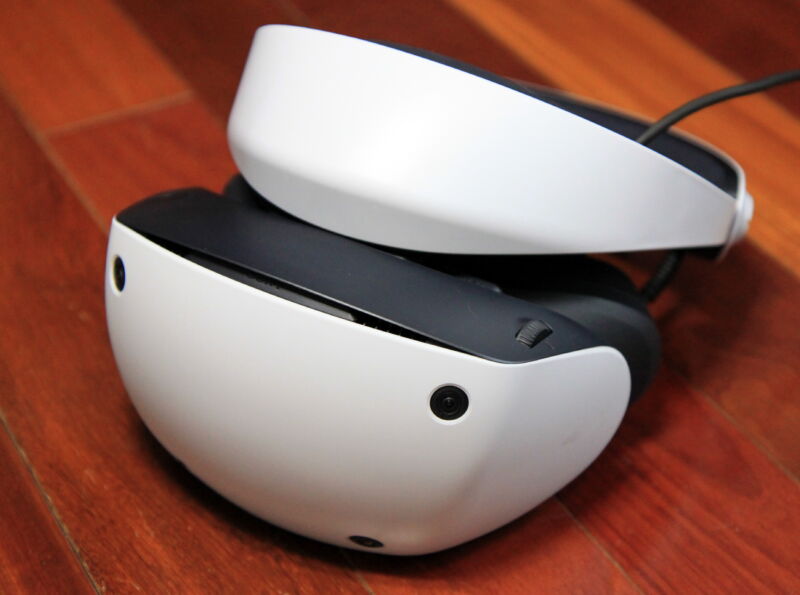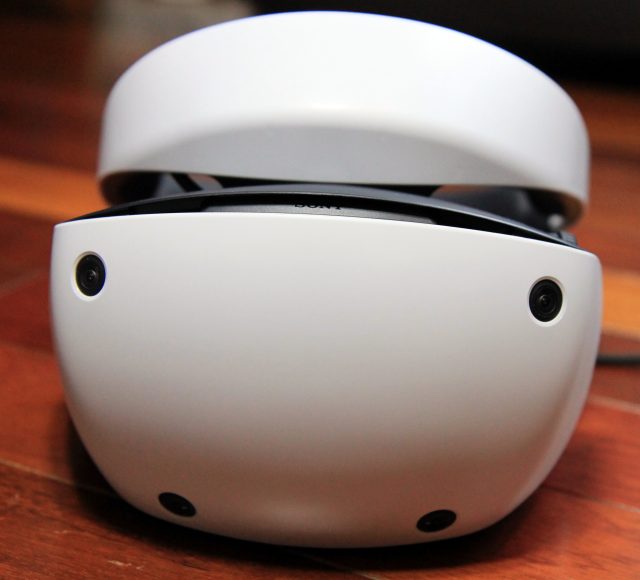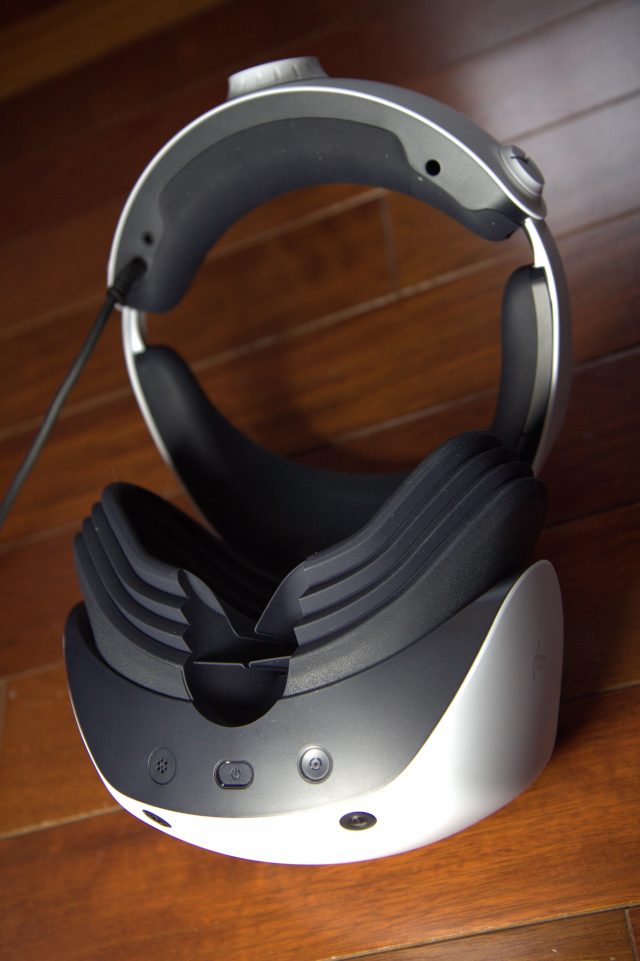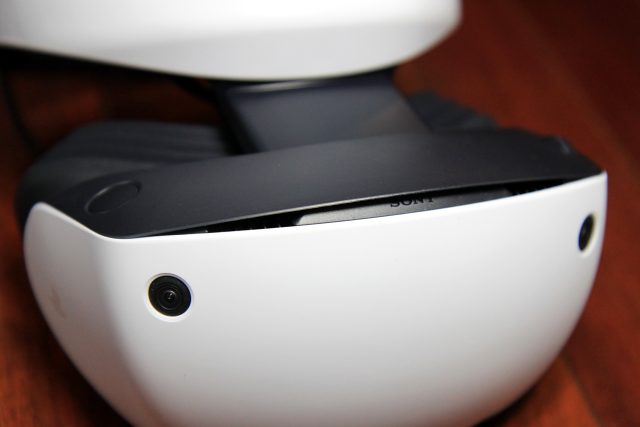
| Headset specs | |
|---|---|
| Headset weight | 560 grams (1.23 lbs, excluding cable) |
| Display | 2000 x 2040 per eye, OLED HDR panels |
| Refresh rate | Up to 120 Hz (90 Hz on many games) |
| Field of view | ~110 degrees |
| Controllers | PSVR2 Sense controllers (required for hand tracking); DualSense |
| Tracking Cameras | 4x outward-facing (for head/position tracking); 2x inward-facing (for eye tracking) |
| Audio | 3.5 mm audio jack on head strap, built-in microphone |
| Notable features | Headset rumble, eye-tracking, resistive triggers |
| Price | $550 (PS5 console also required) |
Consumer-grade virtual reality was still in its infancy in 2016 when Sony decided it should be on the leading edge of the charge. The first PlayStation VR headset sold relatively well compared to its early PC VR competition and quite well compared to other console accessories. But over the last six years, Sony has largely let its first console VR experiment wither on the vine, allowing competitors to advance the state of the art with frequent hardware and software updates.
Now that we’re firmly in the PS5 era, Sony is back to prove it hasn’t completely forgotten about its virtual reality market. The PlayStation VR2 headset shows all the refinements you’d expect from years of technological advancement and throws in a few nice features that aren’t standard among the competition, to boot. Despite those improvements, though, the PSVR2 still feels like a by-the-numbers, too-little-too-late attempt by Sony to keep its foot in a niche it might not be fully committed to.
Ready, get set…

The PSVR2 does away with the ludicrous mess of wires, junction boxes, power plugs, and cameras that came to define the original PSVR. As we discussed in our unboxing impressions, the newer headset features a single USB-C cable that plugs directly into the front of a PS5. That means you’re not left with a clutter of equipment by your entertainment center if you leave the headset plugged in, and it’s not a major hassle to get connected if you want to put the PSVR2 back in the box between sessions.
The USB-C cable is light enough that it doesn’t tug on your head or become a major annoyance as you tilt your neck in VR. If you face away from your PS5, the cable tends to drape seamlessly over your left shoulder and down your back, where you don’t have to think about it in many gameplay situations.

That said, whenever I found myself turning in place, walking around, or doing large swings with my left arm in VR, I would usually have to worry about jostling or getting tangling in that wire. That was just enough of an annoyance to temporarily take me out of the VR experience—the kind of annoyance I haven’t missed during years of regular time with completely wireless headsets like the Meta Quest line.
The PSVR2’s plug-and-play simplicity extends to its relatively painless first-time setup. During that process, internal eye-tracking cameras determine the precise interpupillary distance of your eyes, helping you set the most comfortable distance between the lenses with a simple dial. This is important because if the lenses end up just a tad off-center, the edges of the VR image can look rather blurry—you may need to recalibrate if the headset sits slightly differently on your head in subsequent sessions.

A quick eye-tracking calibration test helps the system figure out exactly where you’re glancing and introduces you to the magical, almost-telepathic feeling of interacting with VR objects using just a glance. After that, the system asks you to look around your room from all angles to help it automatically map out a safe play space on your floor. The process was pretty accurate when I tested it with various furniture configurations, but you can also adjust the suggested play space at the margins with a point-and-shoot-style interface using the (surprisingly high-resolution) passthrough camera.
For VR games you play while sitting, it’s relatively easy to switch from your « standing » play space with a few taps in the menu. Unfortunately, the default cylinder for that sitting area is relatively small, meaning the virtual barriers popped up constantly every time I leaned forward or swung my arms during seated VR sessions.










